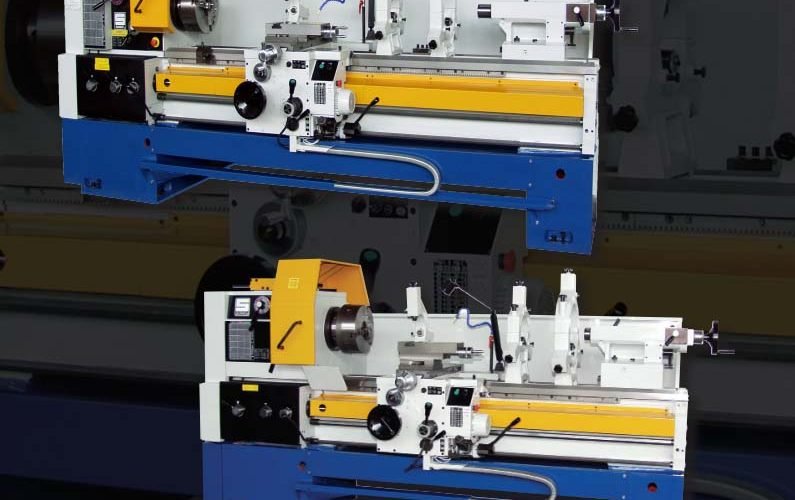In the world of metalworking, the lathe stands as a symbol of human ingenuity and the relentless pursuit of perfection. As we peel back the layers of the American-designed lathe, we see the evolution of craftsmanship, where tradition meets innovation. From the robust mechanical components that form its beating heart to the sophisticated electrical systems that fuel its operations, every aspect of the lathe is a reflection of the dedication to efficiency, reliability, and safety.
Table of Contents
Design and Engineering
When you examine an American-designed lathe, you’ll notice that its efficiency and reliability stem from its expert design and engineering. Each component and system is thoughtfully crafted to meet high standards.
Mechanical Components
The heart of the lathe’s mechanical prowess lies in its precision-ground bedways and robust spindle design. The bedways ensure smooth carriage travel, while the spindle supports various chuck sizes for diverse applications. Here’s a quick overview:
- Headstock: Contains precision bearings for spindle operation.
- Tailstock: Adjustable for varied workpiece lengths.
- Carriage: Houses the tool post, with controls for precise cutting.
Electrical Systems
Your lathe’s electrical system is designed for optimal control and efficiency. Key aspects include:
- Motor: Commonly ranging from 1HP to 5HP, matched to the lathe size.
- Control Panel: User-friendly interfaces with emergency stop features.
- Wiring: Conforms to industry standards for safety and durability.
Material Specifications
Materials used in your lathe construction are selected for endurance and performance:
- Cast Iron: Predominantly used for stability and vibration dampening.
- Steel: Utilized in gear and shaft construction for high tensile strength.
- Aluminum: Sometimes incorporated in non-stress parts to reduce weight.
Safety Features
Safety is never an afterthought. Prominent safety features include:
- Chuck Guard: Shields you from spinning components.
- Emergency Stop: Instantly powers down the machine.
- Lockout-Tagout Capability: Ensures maintenance is done safely.
The American Lathe Functionalities
American made lathes are a masterpiece of engineering designed to elevate your metalworking to an art form. Its versatility and precision make it not just a tool, but a partner in your quest for craftsmanship.
Mastering the Art of Turning
Turning operations are where your journey begins, transforming raw metal into works of precision. The lathe is your steadfast companion, making light work of both roughing and finishing cuts. Whether you’re carving away metal to reveal the rough shape of your vision or applying those final touches that demand the utmost finesse, your lathe responds with agility and accuracy.
The Ease of Sizing and Shaping
With your American lathe, sizing and shaping metal parts becomes an effortless dance. Facing operations turn the chaotic surface of raw materials into a serene, flat landscape, ready for further creation. And when it comes to forming, the lathe’s specialized tools allow you to sculpt intricate contours and custom profiles, bringing your most ambitious designs to life.
A Testament to Precision
In the realm of metalworking, precision is not just a goal; it’s a mandate. Your American lathe stands as a beacon of accuracy, equipped with digital readouts (DROs) that guide your hand to the micrometer. The tight tolerances it maintains are a testament to its unmatched capability, ensuring that every piece you craft meets the highest standards of perfection.
Tailoring Your Tool
The beauty of the American lathe lies in its ability to adapt, to become whatever you need it to be. With a range of attachments and variable settings, it offers you the freedom to experiment and innovate. Whether you’re working with delicate aluminum or robust steel, your lathe adjusts with you, ready to tackle any material you put on its bed.
Technological Integration
In the realm of American-designed lathes, technological advancements have not just been incorporated; they’ve transformed how you interact with these machines.
CNC Integration
Your American lathe likely comes equipped with CNC (Computer Numerical Control) technology. This integration allows for precise, repeatable, and efficient work. CNC technology presents a huge leap from manual control, upgrading your machining accuracy and repeatability through sophisticated software and hardware coordination.
Software and Programming
Embracing CNC, the software behind your lathe becomes its brain. You’ll find that programming your lathe with G-code or using CAM (Computer-Aided Manufacturing) software streamlines the process from design to production. It’s this programming that dictates the movements and operations of the lathe, making your creations as perfect as your original design intended.
Automation in Lathe Design
Lathes today boast features like automatic tool changers and parts loaders, supporting unattended operations. This level of automation not only boosts productivity but also ensures consistent quality, reduces the potential for human error, and decreases your workload. Advanced sensor technologies and feedback systems contribute to the continuous improvement and maintenance scheduling of your lathe’s operations.
Conclusion
The journey through the design, engineering, and capabilities of the American-designed lathe brings us to a profound appreciation for the art and science of metalworking. As we stand on the threshold of a new era in manufacturing, the lathe represents not just a tool, but a beacon of innovation that illuminates the path forward. The fusion of traditional craftsmanship with cutting-edge technology has opened up a world of possibilities, enabling artisans and manufacturers alike to push the boundaries of what is possible.





